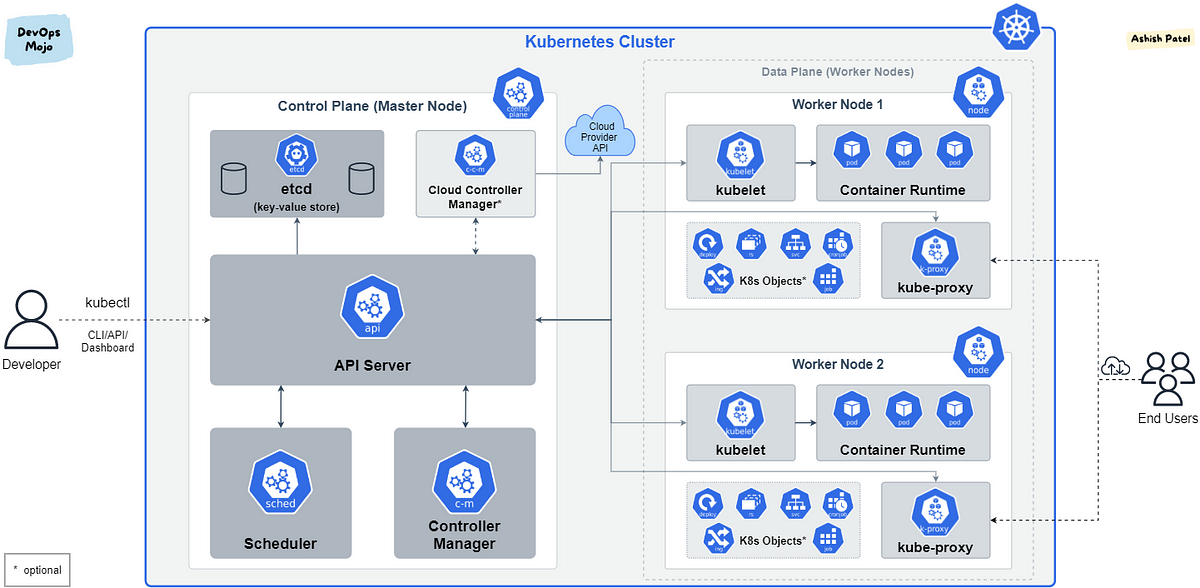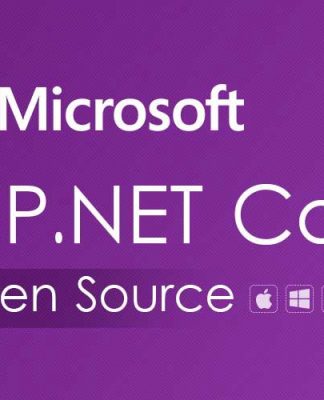
As Kubernetes continues to solidify its position as the leading container orchestration platform, the ecosystem around it is evolving rapidly. In 2024, several tools have emerged as essential for developers and DevOps professionals looking to streamline their Kubernetes workflows, enhance security, and optimize performance. Here’s an overview of the top 5 Kubernetes tools for 2024, complete with usage scenarios, benefits, links to resources, and suggested alternatives.
1. Argo CD
Overview: Argo CD is a declarative, GitOps continuous delivery tool for Kubernetes, which automates the deployment of applications to ensure that the live state aligns with the configurations stored in Git repositories.
How and When to Use: It’s best used in environments where rapid iteration and consistent deployment practices are critical. Argo CD shines in scenarios requiring multi-environment deployment strategies, from development to production, with a clear audit trail for changes.
Why to Use: By adopting a GitOps approach, Argo CD enables teams to leverage Git as the single source of truth for deployment, simplifying the process and enhancing security and traceability.
GitHub: https://github.com/argoproj/argo-cd
Website: https://argoproj.github.io/argo-cd/
Usage Code Example:
argocd app create <app-name> \
--repo <your_repo_url> \
--path <path_to_app_manifests> \
--dest-server https://kubernetes.default.svc \
--dest-namespace <namespace>
Docs: https://argo-cd.readthedocs.io/en/stable/
Suggested Alternative: Flux
2. Helm
Overview: Helm is the package manager for Kubernetes, allowing developers and operators to easily package, configure, and deploy applications onto Kubernetes clusters.
How and When to Use: Helm is invaluable when you need to manage complex applications as it allows you to define, install, and upgrade Kubernetes applications using a simple command-line interface.
Why to Use: Helm charts provide a reproducible way of deploying and managing applications, supporting complex dependencies, and enabling easy updates and rollbacks.
GitHub: https://github.com/helm/helm
Website: https://helm.sh/
Usage Code Example:
helm install my-app ./my-chart
Docs: https://helm.sh/docs/
Suggested Alternative: Kustomize
3. Kustomize
Overview: Kustomize is a Kubernetes-native configuration management tool that enhances Kubernetes’ own configuration management capabilities.
How and When to Use: It’s especially useful in scenarios where you need to maintain multiple, slightly different configurations of the same application, such as different environments or deployment scenarios.
Why to Use: Kustomize allows for the customization of Kubernetes resource configurations without the need for template processing or manual editing, making it easier to manage application configurations across various environments.
GitHub: https://github.com/kubernetes-sigs/kustomize
Website: https://kustomize.io/
Usage Code Example:
# kustomization.yaml
resources:
- deployment.yaml
- service.yaml
Docs: https://kubectl.docs.kubernetes.io/
Suggested Alternative: Helm
4. Prometheus
Overview: Prometheus is an open-source monitoring system with a dimensional data model, flexible query language, and alerting capabilities. It’s designed for reliability and scalability, making it an ideal monitoring solution for Kubernetes environments.
How and When to Use: Use Prometheus to collect and store metrics as time series data, providing insights into your Kubernetes cluster’s performance and the health of your applications.
Why to Use: With its powerful data model and querying language (PromQL), Prometheus enables detailed observation and real-time monitoring of Kubernetes clusters, making it easier to identify and resolve issues.
GitHub: https://github.com/prometheus/prometheus
Website: https://prometheus.io/
Usage Code Example:
# Example Prometheus scrape configuration
scrape_configs:
- job_name: 'kubernetes-pods'
kubernetes_sd_configs:
- role: pod
Docs: https://prometheus.io/docs/introduction/overview/
Suggested Alternative: Grafana for visualization or Thanos for long-term storage enhancement.
5. Istio
Overview: Istio is a powerful service mesh that provides a way to control how microservices share data. It offers advanced traffic management, security features, and observability into your applications.
How and When to Use: Istio is particularly useful in complex microservices architectures where you need fine-grained control over traffic, security policies, and service monitoring.
Why to Use: It provides an additional layer of infrastructure that allows you to secure, connect, and monitor services more effectively, without requiring changes to your code.
GitHub: https://github.com/istio/istio
Website: https://istio.io/
Usage Code Example:
apiVersion: networking.istio.io/v1alpha3
kind: Gateway
metadata:
name: my-gateway
spec:
selector:
istio: ingressgateway
servers:
- port:
number: 80
name: http
protocol: HTTP
hosts:
- "*"
Docs: https://istio.io/latest/docs/
Suggested Alternative: Linkerd
6. Tekton
Overview: Tekton is a powerful and flexible Kubernetes-native open-source framework for creating CI/CD systems, allowing developers to build, test, and deploy across cloud providers and on-premise systems.
How and When to Use: Tekton is best utilized for constructing CI/CD pipelines that are Kubernetes-native. It’s particularly useful for teams looking to standardize their development workflows across different environments in a cloud-native way.
Why to Use: Tekton abstracts away the underlying implementation details and provides a set of standardized, Kubernetes-native constructs for building and running CI/CD pipelines, making it highly scalable and portable.
GitHub: https://github.com/tektoncd/pipeline
Website: https://tekton.dev/
Usage Code Example:
apiVersion: tekton.dev/v1beta1
kind: Task
metadata:
name: hello-world
spec:
steps:
- name: echo
image: ubuntu
command:
- echo
args:
- "Hello World"
Docs: https://tekton.dev/docs/
Suggested Alternative: Jenkins X
7. Flux
Overview: Flux is a tool that enables the GitOps approach to managing Kubernetes clusters, where the desired state of your cluster is described in a Git repository and automatically applied and updated.
How and When to Use: Flux is particularly useful for teams adopting GitOps principles for managing their Kubernetes applications and infrastructure, ensuring that the cluster state is always synchronized with the Git repository.
Why to Use: It automates the deployment process, improves reproducibility and traceability, and integrates seamlessly with Kubernetes, reducing the risk of human error.
GitHub: https://github.com/fluxcd/flux
Website: https://fluxcd.io/
Usage Code Example:
apiVersion: helm.fluxcd.io/v1
kind: HelmRelease
metadata:
name: my-app
spec:
chart:
repository: https://charts.my-company.com/
name: my-app
version: 1.2.3
Docs: https://fluxcd.io/docs/
Suggested Alternative: Argo CD
8. Skaffold
Overview: Skaffold is a command-line tool that facilitates continuous development for Kubernetes applications. It automates the workflow for building, pushing, and deploying applications, making it easier for developers to iterate on their code.
How and When to Use: Skaffold is ideal for development stages, allowing developers to focus on writing code without worrying about the deployment process. It’s particularly useful for teams looking for fast feedback loops during development.
Why to Use: Simplifies the development and deployment process by automating it, supports multiple build tools and deployment strategies, and integrates well with existing CI/CD pipelines.
GitHub: https://github.com/GoogleContainerTools/skaffold
Website: https://skaffold.dev/
Usage Code Example:
apiVersion: skaffold/v2beta13
kind: Config
build:
artifacts:
- image: my-app
deploy:
kubectl:
manifests:
- k8s-*
Docs: https://skaffold.dev/docs/
Suggested Alternative: Tilt
9. Kubevela
Overview: KubeVela is a modern application deployment system that simplifies the deployment and management of applications by abstracting away the complexities of underlying infrastructures.
How and When to Use: KubeVela is best used in environments that require a high degree of automation and abstraction for deploying and managing cloud-native applications across multiple clusters and clouds.
Why to Use: It offers a simplified and consistent approach to application delivery, regardless of the complexity of the services, making it accessible for developers without sacrificing the flexibility and power required by operators.
GitHub: https://github.com/oam-dev/kubevela
Website: https://kubevela.io/
Usage Code Example:
apiVersion: core.oam.dev/v1beta1
kind: Application
metadata:
name: example-app
spec:
components:
- name: example-component
type: webservice
properties:
image: nginx
port: 80
Docs: https://kubevela.io/docs/
Suggested Alternative: Helm
10. Crossplane
Overview: Crossplane is an open-source Kubernetes add-on that extends your cluster to manage and compose infrastructure from multiple vendors and sources as standard Kubernetes resources.
How and When to Use: Crossplane is particularly useful for teams looking to adopt Infrastructure as Code (IaC) practices within their Kubernetes environments, enabling the management of external resources such as databases, clusters, and storage accounts through Kubernetes APIs.
Why to Use: It allows teams to unify the deployment and management of cloud-native applications and the infrastructure they depend on, using a single declarative configuration.
GitHub: https://github.com/crossplane/crossplane
Website: https://crossplane.io/
Usage Code Example:
apiVersion: database.example.org/v1alpha1
kind: MySQLInstance
metadata:
name: my-db-instance
spec:
engineVersion: "5.7"
storageGB: 20
Docs: https://crossplane.io/docs/
Suggested Alternative: Terraform
11. Kube-bench
Overview: Kube-bench is an open-source tool designed to check whether Kubernetes deployments are secure by running the checks documented in the CIS Kubernetes Benchmark.
How and When to Use: Utilize kube-bench to audit your Kubernetes clusters for security compliance to identify and remediate potential vulnerabilities following the CIS (Center for Internet Security) best practices.
Why to Use: Ensuring your Kubernetes clusters are compliant with CIS benchmarks helps safeguard against common security threats and aligns your operations with industry standards for secure Kubernetes deployments.
GitHub: https://github.com/aquasecurity/kube-bench
Website: N/A — Refer to the GitHub repository for all resources and documentation.
Usage Code Example: To run kube-bench, you typically execute it within a container in your Kubernetes cluster:
kubectl run --rm -i -t kube-bench --image=aquasec/kube-bench:latest --restart=Never -- benchmarks/run
Docs: Directly available in the GitHub repository’s README and through various markdown files for different Kubernetes versions.
Suggested Alternative: Kube-hunter
12. Kubernetes External Secrets
Overview: Kubernetes External Secrets allows you to use external secret management systems, such as AWS Secrets Manager or HashiCorp Vault, to securely add secrets in Kubernetes.
How and When to Use: This tool is essential when you manage sensitive information outside of Kubernetes’ native Secrets mechanism and need a secure bridge to use those secrets within your Kubernetes applications without exposing them.
Why to Use: It enhances security by enabling the use of dedicated secret management systems that offer advanced features like secret rotation, centralized auditing, and access control, beyond what Kubernetes native Secrets provide.
GitHub: https://github.com/external-secrets/kubernetes-external-secrets
Website: N/A — The GitHub repository serves as the primary source of information and documentation.
Usage Code Example:
apiVersion: kubernetes-client.io/v1
kind: ExternalSecret
metadata:
name: my-database-secret
spec:
backendType: secretsManager
data:
- key: /my/organization/secrets/database/password
name: password
Docs: Documentation can be found within the GitHub repository, including setup instructions, configurations, and usage examples.
Suggested Alternative: HashiCorp Vault with Kubernetes integration
13. Octant
Overview: Octant is a highly extensible, open-source developer-centric web interface for Kubernetes that provides deep insights into your Kubernetes clusters. It offers a comprehensive view of resources managed within a cluster and features to make troubleshooting easier.
How and When to Use: Octant is particularly useful for developers and operators looking for a visual representation of their Kubernetes clusters, needing to debug issues, inspect cluster resources, or understand the relationships between them.
Why to Use: It offers real-time updates, a plugin ecosystem for extended functionalities, and a user-friendly interface to navigate through Kubernetes resources, making cluster management and troubleshooting more accessible.
GitHub: https://github.com/vmware-tanzu/octant
Website: https://octant.dev/
Usage Code Example: Octant is a GUI-based tool, so typical usage involves starting the application on your local machine, which then connects to your Kubernetes cluster:
octant
Docs: https://octant.dev/docs/



















